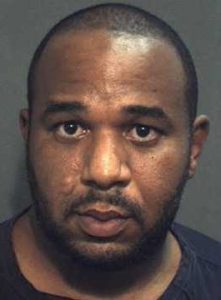cybercrime
 Prisoners have tried to escape ever since there have been prisons. It is the nature of the situation. No one likes to be locked up. Most escape attempts are not successful, and few are what we would consider well planned, but in the case of Florida prison inmates, Charles Walker and Joseph Jenkins, some kind of good planning must have gone into the escape plan. The two men were serving life sentences, without the possibility of parole, for murder, and so I guess they had nothing to lose by getting caught in an escape attempt. Jenkins was incarcerated for a 1998 murder and armed robbery and a 1997 auto theft. He has been in prison since 2000. Walker was imprisoned for a 1999 murder and has been in custody since 2001.
Prisoners have tried to escape ever since there have been prisons. It is the nature of the situation. No one likes to be locked up. Most escape attempts are not successful, and few are what we would consider well planned, but in the case of Florida prison inmates, Charles Walker and Joseph Jenkins, some kind of good planning must have gone into the escape plan. The two men were serving life sentences, without the possibility of parole, for murder, and so I guess they had nothing to lose by getting caught in an escape attempt. Jenkins was incarcerated for a 1998 murder and armed robbery and a 1997 auto theft. He has been in prison since 2000. Walker was imprisoned for a 1999 murder and has been in custody since 2001.
The men were serving their time in a Panhandle prison called Franklin Correctional Institution in Carrabelle, Florida. accidentally released two inmates from a Panhandle prison who are convicted murderers, according to published reports. Somehow, Walker and Jenkins, both 34, were able to obtain fraudulent orders of sentence modification. Based on those modifications, Jenkins was released on September 27, 2013, and Walker was released on October 8, 2013. Both were former residents of Orlando. Their release was apparently “in accordance with Department of Corrections policy and procedure. However, both of their releases were based on fraudulent modifications that had been made to court orders,” Department of Corrections secretary Michael Crews said.
The judge whose name is on the forged documents is Belvin Perry, Orange County chief judge, who presided  over the Casey Anthony case. Perry’s office said that the judge’s signature was forged in the paperwork calling for reduced sentences for the convicted killers. Apparently, however, while the false documents had problems the one thing that was correct was the judges signature. The judge denies any wrongdoing, saying “It is quite evident that someone forged a court document, filed a motion, and that someone with the aid of a computer, lifted my signature off previous signed documents, which are public reports, affixed that to the document, sent it to the clerk’s office. It was processed and forwarded to doc and the defendant ended up being released,” Perry maintains. He also says, “I have never seen anything like this. You have to give them an A for being imaginative and effective.” The reality is that this was not the first time a prisoner managed to obtain false documents, and probably wont be the last, since no one was caught in this act. The prison waited 17 days before notifying the authorities of the escape. Cybercrime is the newest thing. Easy to perform, hard to catch.
over the Casey Anthony case. Perry’s office said that the judge’s signature was forged in the paperwork calling for reduced sentences for the convicted killers. Apparently, however, while the false documents had problems the one thing that was correct was the judges signature. The judge denies any wrongdoing, saying “It is quite evident that someone forged a court document, filed a motion, and that someone with the aid of a computer, lifted my signature off previous signed documents, which are public reports, affixed that to the document, sent it to the clerk’s office. It was processed and forwarded to doc and the defendant ended up being released,” Perry maintains. He also says, “I have never seen anything like this. You have to give them an A for being imaginative and effective.” The reality is that this was not the first time a prisoner managed to obtain false documents, and probably wont be the last, since no one was caught in this act. The prison waited 17 days before notifying the authorities of the escape. Cybercrime is the newest thing. Easy to perform, hard to catch.

